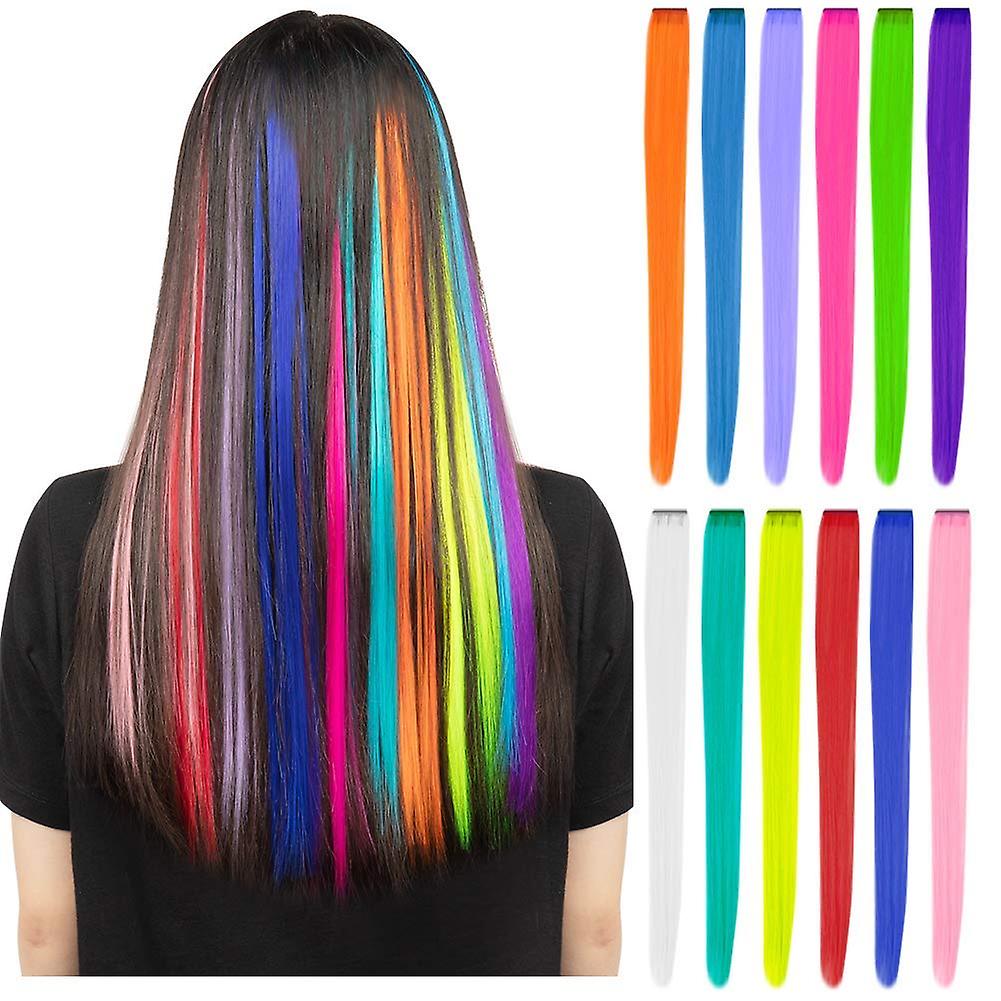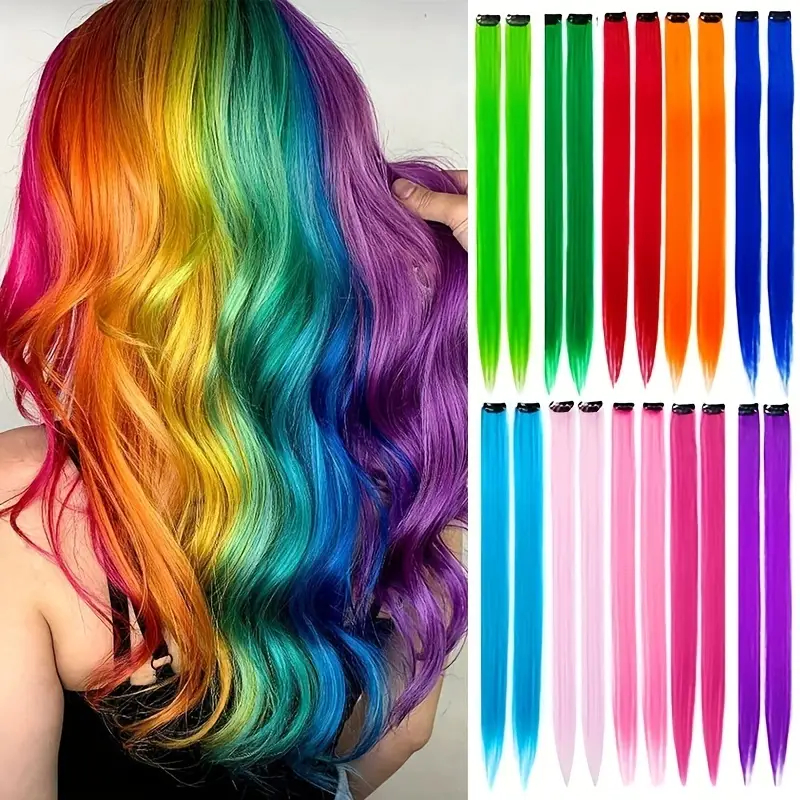Dyeing synthetic hair extensions can be a challenging task due to the nature of the fibers, but with the right approach and techniques, it’s possible to achieve a color change. Synthetic fibers are made from various types of plastic and do not absorb dye like natural human hair. Traditional hair dyes, which are designed for real hair, will not work on synthetic extensions. However, there are alternative methods that can be used to dye synthetic hair, allowing for customization and creativity in your styling choices. This comprehensive guide will explore the steps, precautions, and tips for successfully dyeing synthetic hair extensions.

Understanding Synthetic Hair Extensions
Before diving into the dyeing process, it’s important to understand that synthetic hair extensions come in different qualities. Lower-quality synthetic fibers are less likely to tolerate any form of dyeing or coloring. High-quality synthetic hair, often labeled as “toyokalon” or “kanekalon,” may better withstand gentle dyeing processes. Always check the manufacturer’s recommendations before proceeding.
Methods for Dyeing Synthetic Hair Extensions
Using Fabric Dyes
Fabric dyes, unlike traditional hair dyes, can adhere to the plastic-based materials of synthetic extensions. Before you start, ensure that the fabric dye is compatible with synthetic materials.
- Preparation: Wash the extensions to remove any styling products and detangle them gently. Prepare your workspace by covering surfaces with plastic sheets or newspapers to prevent staining.
- Mixing the Dye: Follow the instructions on the fabric dye package. Usually, this involves dissolving the dye in hot water. Make sure the water is not boiling, as excessive heat can damage the extensions.
- Dyeing Process: Submerge the synthetic hair extensions in the dye solution. Use a wide-tooth comb or your fingers (wearing gloves) to ensure the dye is evenly distributed throughout the hair.
- Timing: Leave the extensions in the dye for the recommended time on the dye package, usually between 30 to 60 minutes. Keep an eye on the color change; synthetic hair might take on color faster or slower than expected.
- Rinsing and Drying: Once the desired color is achieved, carefully rinse the extensions in lukewarm water until the water runs clear. Avoid wringing the hair. Lay the extensions flat on towels to air dry.
Using Ink and Alcohol
Another popular method involves using ink (from markers or ink bottles) mixed with alcohol to create a dye solution for synthetic hair.
- Ink Selection: Choose alcohol-based ink in your desired color. If using markers, you’ll need to extract the ink from several markers.
- Creating the Dye Solution: Mix the ink with rubbing alcohol (isopropyl alcohol) in a spray bottle. The alcohol helps the ink penetrate the synthetic fibers.
- Application: Spray the dye solution onto the synthetic hair extensions or dip the extensions into the solution. Ensure even coverage for a uniform color result.
- Processing Time: Allow the extensions to absorb the dye. This can take anywhere from a few hours to overnight, depending on the intensity of the color desired.
- Rinsing and Drying: Rinse the extensions with cold water and let them air dry on a towel.
Important Tips and Precautions
- Patch Test: Always perform a patch test on a small section of the extension to see how it reacts to the dye.
- Wear Gloves: Protect your hands from staining by wearing gloves during the dyeing process.
- Avoid Heat: Synthetic hair is sensitive to heat. Use lukewarm water for rinsing and avoid using hair dryers or hot tools after dyeing.
- Realistic Expectations: Understand that the results may vary, and achieving the exact color you want might be difficult. Be prepared for experimentation.

Additional Considerations for Dyeing Synthetic Hair Extensions
- Color Selection: When selecting a color, remember that it’s easier to dye synthetic hair into a darker shade rather than lighter. Attempting to lighten synthetic hair is not recommended, as bleach and other lightening agents can severely damage the fibers.
- Texture Preservation: The texture of synthetic hair might change slightly after the dyeing process, especially if heat was involved or if the fibers reacted to the dye. Be prepared for a potential alteration in the hair’s original texture.
- Environmental Factors: Synthetic hair, like natural hair, can fade over time, especially when exposed to sunlight or harsh environmental conditions. Keep this in mind when choosing colors and when wearing your extensions outdoors.
Alternative Coloring Methods
Using Acrylic Paint
For a temporary splash of color that’s great for costumes or one-time events, acrylic paint diluted with water can be applied to synthetic hair extensions. This method, while not long-lasting, offers a wide range of vibrant colors.
- Dilute Acrylic Paint: Mix a small amount of acrylic paint with water until you achieve a runny consistency. The more water you add, the less intense the color will be.
- Apply to Extensions: Using a brush or your fingers, apply the diluted paint to the extensions. Comb through to ensure even distribution.
- Let Dry: Hang the extensions to air dry completely. Avoid touching them until they’re fully dry to prevent color transfer.
- Rinse Out: Since this method is temporary, the paint can be rinsed out with water when you’re ready to remove the color.

Colored Hair Sprays
Colored hair sprays are another temporary option that can be easily applied and washed out. They’re available in a wide range of colors and can be found at most beauty supply stores.
- Spray Evenly: Hold the spray can a few inches away from the extensions and apply the color evenly. It’s best to do this over a protected surface or outdoors.
- Let Dry: Allow the spray to dry completely before handling the extensions.
- Washable: These sprays are designed to be washed out easily with shampoo and water, making them a great option for temporary looks.
Caring for Colored Synthetic Hair Extensions
After dyeing your synthetic hair extensions, proper care is crucial to maintain their condition and color.
- Gentle Washing: Use a mild shampoo and lukewarm water to gently wash the extensions. Avoid scrubbing or twisting the fibers.
- Conditioning: While synthetic hair doesn’t absorb conditioner like natural hair, a lightweight, leave-in conditioner can help detangle and add a slight sheen to the fibers.
- Avoid Heat Styling: If possible, avoid using heat styling tools on dyed synthetic hair. If you must use them, set them to the lowest heat setting and use a heat protectant spray designed for synthetic hair.
- Storage: Store your colored synthetic hair extensions properly when not in use. Hanging them or storing them in a silk or satin bag can prevent tangling and help maintain their shape and color.

Conclusion
Can you dye synthetic hair extensions – Dyeing synthetic hair extensions requires patience, precision, and an understanding of the limitations of synthetic fibers. While the process is more complex and less predictable than dyeing natural hair, it opens up creative avenues for personalizing your look. Whether you opt for fabric dyes or the ink and alcohol method, always proceed with caution and care to protect the integrity of the extensions. With practice and attention to detail, you can achieve beautiful, customized colors that enhance your synthetic hair extensions.

